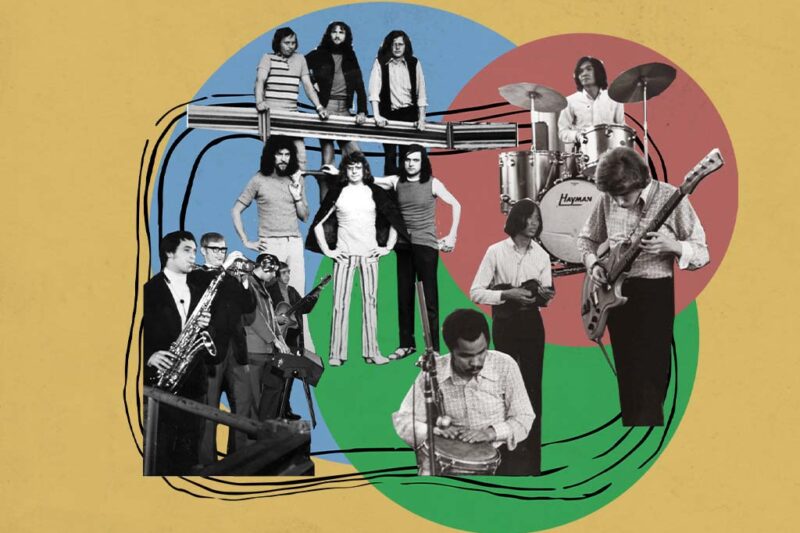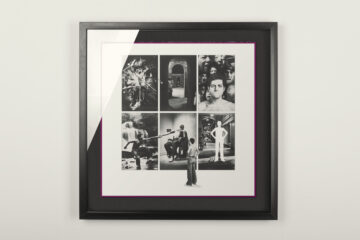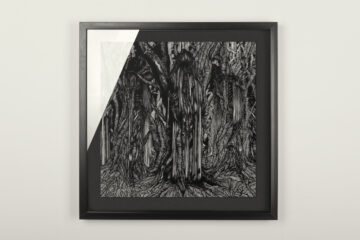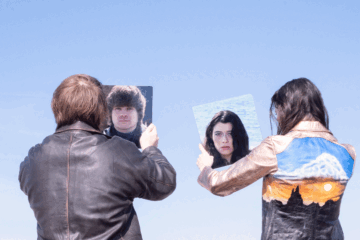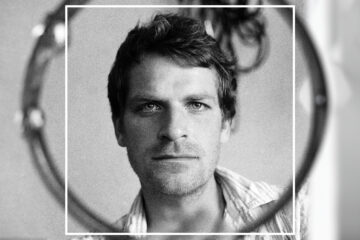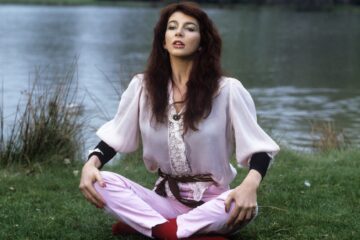The look in the rear-view mirror
After World War II was over, the Soviet occupation zone was finally designated the German Democratic Republic and declared a socialist state in October 1949. Thus, the communist East and the capitalist West stood directly opposite each other. Held apart by the so-called »iron curtain«, the latter finally became the »Berlin Wall« in 1961. The aim was to stop the continuing mass exodus to the »West«.
From the beginning, the »free market economy« was transformed into a »socialist planned economy«. All previously privately owned companies, businesses and enterprises were »nationalised«. The entire market economy was thus supported, planned and carried out by the state alone. This also applied to the arts and culture, so that the production of vinyl records by the Amiga label was ultimately under the control of the Ministry of Culture. This meant that it was desired that the music, especially the lyrics, promoted socialist ideas or at least were neutral towards them. To this end, there were corresponding inspection bodies to which the musicians had to submit their lyrics before they could publish their songs. This form of state regulation existed in many other fields. For example, as a so-called »Schallplattenunterhalter/Diskomoderator« (term for a professional DJ) you needed a licence. These were available in different categories, which meant a certain hourly wage depending on the classification. In addition, the licence was tied to special qualification tests. In a so-called assessment discotheque, it was tested whether »the apprentice DJ« had the skills to entertain the audience with a high level of quality. The notorious »60/40« rule was also important. This meant that the proportion of music from outside the GDR could not be higher than 40%, so that it could be ensured that at least 60% of the music played was from the State repertoire. This rule was sometimes more and sometimes less valid, depending on where and in which circles the events took place.
The beat music followed the Rock’n’Roll
In the 1950s, certain musical trends such as rock’n’roll or the twist became established, especially in the western hemisphere. These »fashion trends« also reached the GDR. Dance styles and music trends that spilled over from the »Klassenfeind« (»class enemy«) did not fit into the socialist culture of values. On one hand, such cultural influences (which were possible through the reception of Western radio stations) were perceived as a kind of imperialist act on the political level, and on the other hand, they could not really be prevented or controlled. Therefore, a variety of political countermeasures popped up. Among other things, the »rock and roll dance« was turned into the »Lipsi«. This »socialist version« was correspondingly more moderate in its motions. Despite many efforts by the state to promote it, the »Lipsi« did not catch fire.
In the early 1960s, Beat bands like the Beatles and Rolling Stones created a global mass phenomenon within youth culture. The Beat did not even stop at the Wall. Even the state-owned label Amiga released their first Beatles LP in 1965. It was a compilation of their hits that had been released up to that point. The German Beat fans in the West and East were literally addicted to this musical phenomenon, so that they adapted the hairstyles and fashion tics of their idols and the young scene of musicians (on both sides of the Wall) eagerly played the songs they heard. Some developed their own style in the process, others tried to come as close as possible to the originals. The veins, on the other hand, tried to come as close as possible to the originals. The beat brought the young generation the longed-for soundtrackto separate themselves from all the »old fug« of the »philistine bourgeoisie«. And they wanted to shape this »soundtrack«.
In 1964, a youth radio station was launched in East Berlin: DT64 made it possible for young people to listen to Beat music. For the SED regime, »Beat« and »propaganda« could be combined beneficially at that time and also served to woo the favour of their young fellow citizens. In that »liberalised« phase, countless Beat combos were founded in the GDR. Some of them even made it onto the state vinyl releases. Groups like Butlers, Sputniks and Franke Echo won the young hearts of their peers almost overnight. Within the scene, things were bubbling up, formations playing Beat music were popping up everywhere. Only a few of them made it onto records, but they played in numerous milk bars and youth centres.
Shaggy hair coat
While the Beatles were already moving towards »disbanding« in the mid-1960s and their appearance was more moderate and socially acceptable on the world’s stages, the »Stones« appeared extremely progressive (by the standards of the time) with long hair and torn jeans. In the perception of the older generation, they were considered »ruffians« who would corrupt the youth. The social image of the young Beat movement tilted more and more and finally escalated after riots at a Rolling Stones concert at the Waldbühne in West Berlin in 1965. For once, West and East agreed that in their opinion the Beat music had a bad influence on German youth. So they launched veritable smear campaigns, through educational commercials or corresponding newspaper articles with catchlines like »They don’t wash and stink, their shaggy mane is felted and filthy, they avoid work and study« (Neues Deutschland from October 17, 1965).
The SED regime put a stop to the scene. The political leaders used the events at the Waldbühne in West Berlin as a reason to ban Beat music immediately. They wanted to prevent such events in their own country, they said. At that time there was a particularly flourishing Beat scene in Leipzig. There were 56 registered groups in the district of Leipzig alone, only 9 were allowed to keep their playing permits. Among the banned groups were also the top of the scene such as The Butlers. The restrictive approach of the SED leadership generated resistance among Beat supporters in Leipzig during the same period. Mainly pupils organised a meeting in Leipzig’s city centre to voice their displeasure about the Beat ban. Around a thousand young people gathered and, according to press reports at the time, were dispersed within twenty minutes with the use of water throwers, batons and police dogs. There were also arrests and punishments such as »re-education measures« in the form of forced labour for up to three months in labour camps for brown coal mining.
Musical rediscovery
Due to the Beat ban, the music style became a little more pleasing. The beat was mixed with Schlager but also with rock and jazz. Today, the Berlin label Black Pearl Records, run by Tom Sky and Roskow Kretschman, is interested in the last two stylistic developments. Again and again, the label surprises with new, partly unreleased recordings from the former GDR in the form of lovingly presented vinyl releases. Thus, lovers get insights into unreleased works of the group Panta Rhei such as the album »Leben« or also the group WIR. The special GDR sound of jazz, progressive rock and Beat is becoming increasingly popular among global music lovers. Gilles Peterson chose the Black Pearl release »Experiment mit Jazz No.3, Friedhelm Schönefeld-Trio« as one of his favourite records of the year in 2017.
In recent years, Tom Sky has worked with film producer and director Bernd Maywald to curate a vinyl compilation called »Die Notenbank – Tanz für junge Leute«, which for the first time focuses on the Beat music of the GDR within his label work. »Die Notenbank was a GDR television programme with dance music aimed at a younger audience«, Tom Sky tells us in the interview and then elaborates: »Bernd Maywald had the idea for it in 1969 and wanted, among other things, to give unknown groups a stage. In 1969, Beat in its original form was also fused with ever greater elements of rock and jazz. There were plenty of talented, but also completely unknown bands that used ›Beat‹ as a basis for rhythm, but in itself it was more ›groovy prog rock‹, sometimes with jazz influences, sometimes instrumental, sometimes with vocals. Especially the latter often seems a bit ›Schlager-like‹ today, but in our selection of songs for the current ›Notenbank‹ compilation we have tried to choose the most stylistically confident titles, as well as those which were not represented on the ›Hallo‹ label series. In a way, this is the heritage of the GDR Beat era. In addition, the ›Notenbank‹ TV programme was also the first German TV pop programme ever, especially with German-language lyrics. The programme gave young groups, in particular, the opportunity to showcase their skills in front of a large audience. Some recordings are available on DVD, but I wanted to make a vinyl compilation out of the great material that usually doesn’t appear there. The musical quality was just too tempting not to do it. So it came about that I was able to make contact with Bernd Maywald through members of Joco Dev and it came to a collaboration very quickly, because Maywald liked the idea of a complete Notenbank TV soundtrack LP very much.«
The Beat music disappeared more and more. In the mid to late 1960s, Jimi Hendrix, Janis Joplin and the other usuals from the »Rock Revolution Olympus« were more in demand and also had an impact on the global music landscape, including that of the GDR. Psychedelic rock combined with jazz was particularly prevalent in the GDR, as the group SOK proved with their album »Der Grüne Vogel« (»The Green Bird«). This was due to the fact that many of the professional musicians often came from jazz and to the global influences that also left their mark in the GDR. The trends always found their way and were gladly reinterpreted by their enthusiastic listeners (mostly via the radio) or, in the context of the post-war period, also and above all gave them a possibility of identification.


